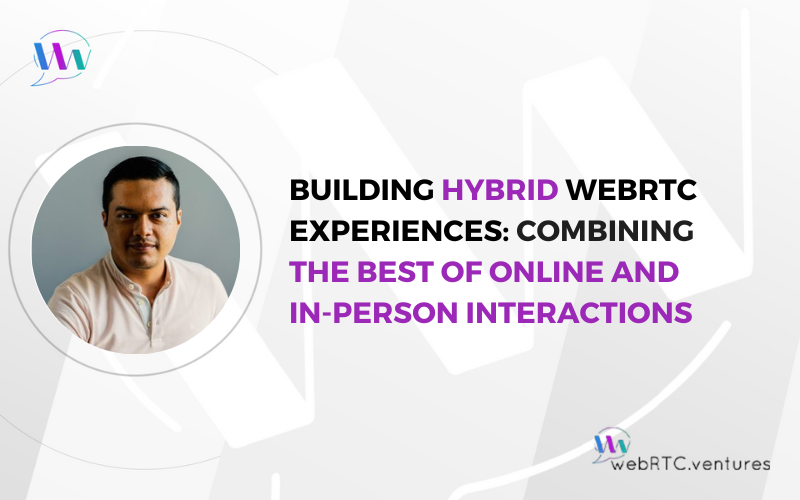WebRTC is a technology that bestows modern web applications real-time communication capabilities. It facilitates encrypted, seamless communication of video, audio, and data. Its uses range from video conferencing to workplace collaboration tools to broadcasting, and so much more.
The power of remote communication lies in its ability to foster real-time collaboration among geographically dispersed individuals. This collaboration is facilitated by communication tools that offer functionalities such as low-latency video/audio conferencing, shared document editing, and interactive chat.
Before, during, and after the pandemic, WebRTC has enabled organizations to adopt a remote culture, social media to thrive, viewers to interact while watching sport and concert events, contact centers to better serve and sell, and so much more.
The Remote Experience
How do we create exceptional remote communication experiences? Let’s use online education as an example. Among other things, an edtech application must:
- Establish seamless communication between students and teachers
- Have the appropriate tools to support such interactions
In a typical classroom, teachers and students are in the same place and can talk to each other. They also have proper tools to support the educational experience, such as whiteboards, books, notebooks and other teaching materials. Tele-education applications need to provide the means for people “to be” in the same virtual environment and also the virtual “tools” to perform their activities, as if they were in the classroom.
This translates to providing audio/video communication combined with specific functionalities such as virtual whiteboards, shared notebooks and collaborative educational activities within the application. At WebRTC.ventures, we’ve created many such applications – before, during, and after the pandemic.
On-site engagement is regaining ground
As good as remote engagement can be, on-site activity is continuing to recover some of the ground that it lost during those pandemic years.
– Companies are asking their employees to go back to their offices. But not every day.
– Concerts and sporting events are back on (Taylor Swift, of course!) But many are staying home for the “couch tour” experience. They are watching online, yet still interacting with fellow fans in real-time
– Many job interviews are again done in person. But if a candidate is far away, there is no need for them to travel for that first round. And regardless, there is a good chance that at least a portion of the hiring team is working remotely.
In these contexts and more, hybrid communication approaches are required that harmonize remote and in-person interactions. There are, indeed, benefits to both. Clients are reaching out to us at WebRTC.ventures in increasing numbers to help retrofit formerly remote-only platforms to ones that combine the flexibility of remote approaches with the advantages of on-site engagement.
Building a successful hybrid approach
Beware, this combination is not a straightforward approach. When not implemented appropriately, companies end up with the same practices as remote, only now performed from an office or school. They lose the added value that they were looking to achieve.
A successful hybrid approach is not only a matter of changing from where we work or study. It is also changing the tools, and how we use them. The goal is to have the best of both worlds.
The trick to doing this correctly is taking into account the work flows that were proven successful in remote approaches and combining them with on-site practices in a way that each accommodates the other.
In the next post of this series, Building Hybrid WebRTC Experiences: EdTech Case Study, we see a technical example of this in an online education application.














